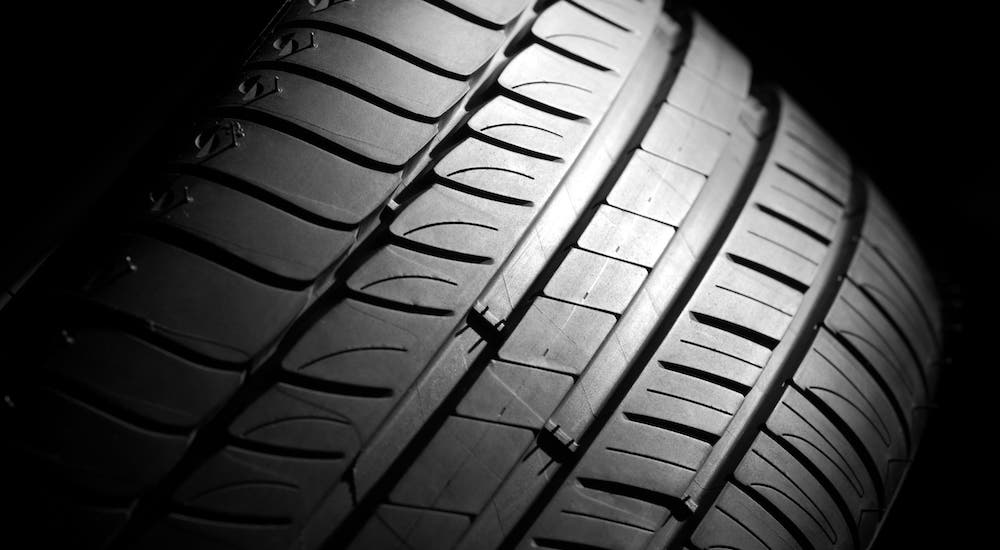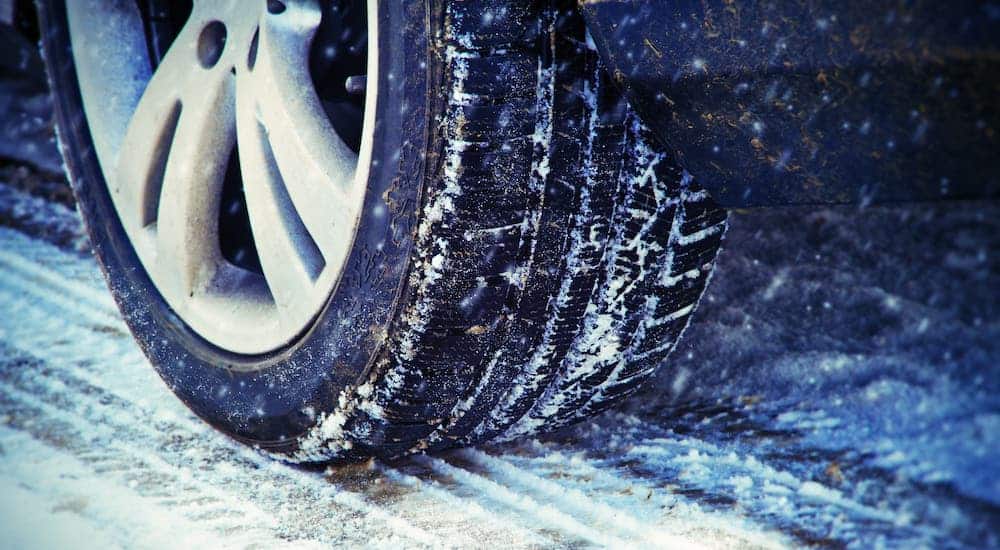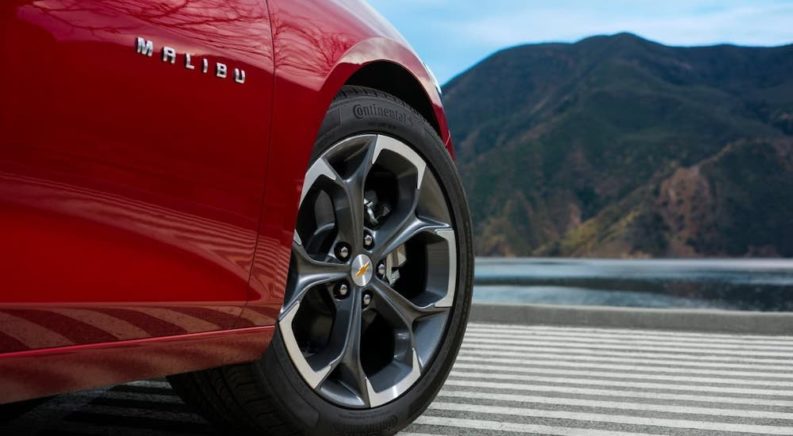Perhaps the most important vital components of your car are the tires, so don’t waste your money searching for the cheapest discount tires you can find. Maintaining their condition and making sure they are rotated and replaced when necessary is essential to your safety on the road. Not everyone appreciates what the tire’s function actually is.
A tire allows your car to move by gripping the road and channeling water away to prevent slipping. They are a crucial part of car design as their height, roll, and performance are all part of the car’s onboard computer programming. The wrong tire on a car can result in disastrous handling.
Parts of the Tread
The tire is a much more complex mechanical system than it is given credit for. One of the most important features of the tire, and the feature that is the largest difference from one kind of tire to the next, is the tread. The tread itself is made up of several different pieces, and each is specifically designed to serve a specific purpose. Different tire designs increase or decrease these features to get very different results for how the tire interacts with the ground.
Grooves and Lugs
Grooves channel water, snow, or mud out from under the tire itself in order to keep your vehicle from sliding. Different patterns help determine what the tire is best at achieving or navigating and handling as well as how it deals with specific weather conditions. Be sure to regularly measure the depth of the grooves on your tires. If they are worn down to less than 2/32 of an inch, it is time to replace the tires.
The lugs are the part of the tire that actually touches the road. These provide grip and traction. They help reduce vibration, and well-made lugs are quiet. Larger, off-road tires need more regularly shaped lugs, which can be louder on pavement.
Voids and Sipes
The lugs need to be able to shift and flex as the tire rolls. The voids allow the lugs the space to move and then return to their normal shape. If there are fewer voids, there is more contact area on the tire, which is desirable for drivers who desire responsive braking and cornering.
Sipes are similar to voids in that they are also cuts in the tire that run perpendicular to grooves. However, sipes are smaller and are most commonly found on winter tires to improve traction on ice. While you may see services to add aftermarket sipes to your tires, these are best avoided.

Types of Tires
Tires that are good at one terrain or weather, often are worse for a different one. That is why there are different seasonal or terrain-based tires. Racing tires have a lot of surface contact for maximum grip in the dry but don’t operate well in wet weather. Meanwhile, tires with tons of sipes and grooves are fantastic in snow and rain but aren’t as good at braking or handling in dry weather.
You typically have a set of tires for summer and a set for winter based on your climate. Taking care of your tires requires knowing about the needs of your tire, what they are made out of, your driving style, and the weather. If you regularly rotate your tires as needed, they will wear evenly, and monthly pressure checkups can keep them in good condition. Tracking your tire mileage to replace them is necessary in order to maximize performance and safety.
Snow and Winter tires
Snow tires are a nuisance but essential if you live in a climate with heavy snow and ice. If you live in a place where it consistently gets to be under 45 degrees Fahrenheit, you need them because the rubber in regular tires loses performance when the temperature falls. Once it gets to be that cold, it is important you do not wait to get your snow tires on. They perform well not just in snow but in general winter ice, sleet, and cold.
Keep snow tires stored in a cool, dry place offseason. Don’t let them get too hot, or it can compromise the rubber. Most standard cars and trucks have wheel sizes that range from 16 to 18 inches. But if you are planning on getting a separate set of wheels for your winter tires, it is not a bad idea to go about 1 inch smaller than your normal wheel size to get a softer ride on bumpy winter roads.
Performance Tires
These are primarily for racers. They are meant for tracks or reliably dry weather, so they have few grooves and are designed to maximize dry traction for braking response, cornering, and steering. Due to the demands of these tires, they often need much more often maintenance and replacement.
All-season Tires
These perform well in all seasons, as the name suggests. If you have them rotated regularly, they can survive for years. As opposed to having seasonal tires changed out twice a year, the convenience of all-season tires also saves money. The cons of these tires are that while they work well in light snow, but unlike proper snow tires, they are not meant for intense winter weather.

All-terrain Tires
The open, interlocking tread design of the tires provides strong grip and traction on unstable ground while still performing moderately well on paved roads. These tires can support heavier loads with reinforced sidewalls. These can also double as snow tires, though not specifically designed to deal with cold, they can tackle the snow. However, they are much louder and less fuel-efficient due to the increased resistance. They also don’t last as long because they are made of a softer rubber.
Low Profile
More and more cars and even SUV now have low profile tires with minimal sidewalls. These are prized for their road grip and stability, making them popular for sports cars and luxury vehicles. However, they will produce a somewhat firmer ride, and you should absolutely avoid potholes when driving with them. If you want a softer ride or need to deal with rough roads, then consider switching to smaller wheels and tires with larger sidewalls.
Mud Tires
Mud tires are specifically designed for swampy, off-road driving. Modern mud tires can operate fairly well on highways, but they shouldn’t be relied on due to their reduced fuel efficiency, much like other off-road tires. They also don’t offer a high level of performance on wet roads and can hydroplane under certain conditions.
SUV and Truck Tires
Not all tires are intended for all types of vehicles, and you want to know your vehicle’s load range, which can be found on your vehicle’s door jamb. Heavier vehicles like full-size SUVs and trucks will need special tires to handle the extra load – particularly if you are hauling or towing. It is good to be aware of the heaviest load you expect to be carrying.
Truck tires have aggressive tire design with tall sidewalls and are built to withstand heavy loads. The tread is also capable of difficult terrain and highway traction when towing heavy loads they can grip much stronger. Truck tires are much larger and more expensive. Also, the bigger the tires, the taller the sidewalls, which can also help with off-road performance.
Right Tire for the Job
Tires are an essential part of your car. It can move without an engine, but it can’t move without tires. Depending on where you live, what vehicle you drive, and how you plan on driving, it can drastically alter the kind of tire you need in order to drive safely and ensure peak performance. Regular maintenance and an understanding of the needs of your tires can help make sure you aren’t wasting money replacing tires more often than you need.

